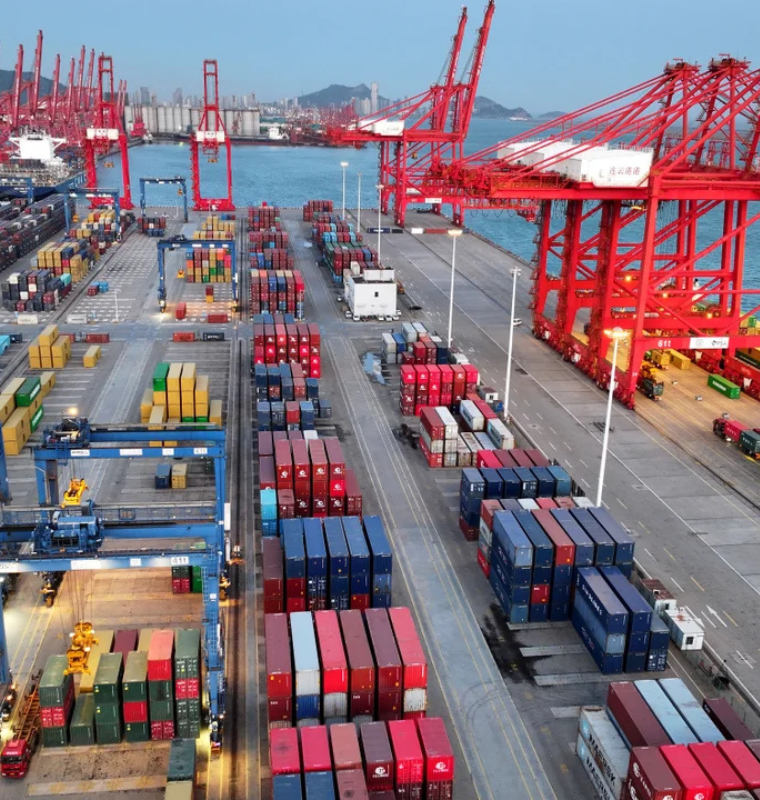Japan October Exports Surge Past Expectations Driven by Strong Demand from Asia and Europe
Japan October Exports Surge Past Expectations Driven by Strong Demand from Asia and Europe
By
Leah Rosenfeld
Last updated:
November 21, 2025
First Published:
November 21, 2025
.webp)
Photo: Bloomberg.com
Exports Deliver a Stronger-Than-Expected Boost
Japan’s export sector delivered a significant upside surprise in October, offering much-needed support to an economy that contracted in the third quarter. Official data released Friday showed outbound shipments rising 3.6 percent year over year, far exceeding the 1.1 percent growth projected by economists. Although the pace of expansion slowed slightly from September’s 4.2 percent, the figures marked one of the strongest monthly performances of 2025.
Demand from Asia and Europe proved to be the key driver. Exports to Asia increased 4.2 percent, supported by orders for electronics, machinery, and intermediate goods. Shipments to Western Europe surged 8.8 percent, bolstered by stronger industrial demand and a rebound in automotive and precision equipment exports.
This strength helped offset a 2.7 percent decline in exports to North America. Shipments to the U.S. fell 3.1 percent, led by another sharp drop in automobile exports, which fell 7.5 percent from a year earlier—though that was a milder decline than September’s steep 24.2 percent fall.
Trade Tensions Loom Over Japan’s Largest Markets
The encouraging figures arrived amid rising diplomatic friction between Japan and China. Ties have strained over Prime Minister Sanae Takaichi’s remarks concerning Taiwan, prompting economic responses from Beijing.
According to industry briefings, mainland China has paused imports of Japanese seafood. Reports circulating on Chinese social media also suggest that several Japanese retail outlets in major cities such as Shanghai and Beijing temporarily closed “for reasons that everyone knows,” signaling potential commercial fallout. Analysts warn these tensions could impact November’s trade volumes if restrictions widen or retail disruptions persist.
Despite external risks, imports into Japan unexpectedly rose 0.7 percent, defying expectations of a 0.7 percent decline. The data suggests resilient domestic demand, though higher import volumes may weigh on overall trade balance figures in the months ahead.
Economic Pressures Persist Despite Export Strength
Japan’s economy remains on fragile footing. GDP contracted 0.4 percent in the July-to-September period, underscoring soft domestic activity. Net exports alone shaved 0.2 percentage point off total growth, making October’s export strength a timely reversal of the previous quarter’s drag.
Inflation continues to complicate the economic landscape. October marked the 43rd consecutive month in which consumer prices stayed above the Bank of Japan’s 2 percent target, intensifying discussions on currency dynamics and monetary stability. The Japanese yen strengthened slightly to 157.39 against the dollar following the data release, while the Nikkei 225 index fell 2.38 percent.
Finance Minister Satsuki Katayama warned that sharp, one-directional moves in the yen could prompt intervention. The dollar has risen 2.19 percent against the yen so far in November and 9.52 percent over the past six months, according to market data.
Currency Markets Weigh Intervention Risks
Strategists remain divided on whether Tokyo will move to stabilize the currency. Mitul Kotecha, head of FX and EM macro strategy at Barclays, noted that intervention is most effective when broader market momentum supports the effort—something that current dollar strength makes challenging.
While he believes immediate intervention is unlikely, Kotecha emphasized that volatility remains a critical factor. Japanese officials may react not only to currency levels but also to the speed of market swings, opening the door to targeted actions if turmoil accelerates.
A Rare Bright Spot in a Difficult Quarter
Japan’s October exports provide a welcome counterbalance to recent economic weakness, offering evidence that overseas demand—especially from Asia and Europe—remains resilient. However, downside risks persist, from geopolitical tensions to currency volatility and shaky domestic growth.
The coming months will reveal whether this export recovery can be sustained or if the improving trend is overshadowed by broader global and regional challenges.
Popular articles
Subscribe to unlock premium content
Why Some People Hire Professional Bystanders to Simulate Social Interaction in Public Spaces
.png)
The Rise of Micro-Memorials People Paying to Preserve Tiny Personal Moments in Luxury Miniature Sculptures
.png)
The Market of Paying Strangers to Share Their Most Embarrassing Stories in a Private Setting
.png)
Why Some People Hire Professional Bystanders to Simulate Social Interaction in Public Spaces
.png)
The Rise of Micro-Memorials People Paying to Preserve Tiny Personal Moments in Luxury Miniature Sculptures
.png)
Why Some People Hire Professional Bystanders to Simulate Social Interaction in Public Spaces
.png)








